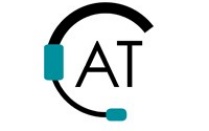Step 5.2
Project management strategies for prototyping breakdowns (2009)
Prototyping is often presented as a universal solution to many intractable information systems project problems. Prototyping is known to offer at least three advantages (1) provide users with a concrete understanding, (2) eliminate the confusion, (3) cope with uncertainty. A possible consequence of the breakdown of prototyping is the direct reversal of these advantages. Thus broken prototyping projects may be evidenced by (1) user misunderstandings, (2) confusion over the process and the product, and (3) rising uncertainty. Direct management of these factors can help recover from prototyping breakdown. Based on an analysis of a prototyping project case from the health-care sector we derived a 3-by-3 framework of coping strategies for managing prototyping breakdowns; the framework was based on the theory of the iron triangle for project management. We found all the coping strategies to be applied in the project case at different points in time. The strategies led to a partial recovery of the project but the recovery emerged not from a single strategy, but from an interdependent and interactive process of using several coping strategies in a sequence.
https://www.computer.org/csdl/proceedings/hicss/2009/3450/00/09-09-06.pdf Download pdf
A Model-Based Framework to Overlap Product Development Activities (1997)
In summary, few analytical methods exist to model and analyze the product development process. Existing project management tools are inadequate because product development processes are inherently iterative, and information in product development processes can be profitably exchanged multiple times in preliminary form. This paper contributes to the research on the management of the design process by (i) highlighting the limits to concurrency and developing a simple model of the overlapped development process, (ii) presenting a conceptual framework to facilitate managerial decision-making about overlapping a currently sequential process, and (iii) illustrating both the model and the framework with industrial applications thereby demonstrating their potential value. (p. 451).
http://web.mit.edu/eppinger/www/pdf/Krishnan_MS1997.pdf Download pdf
Prototyping Framework: A guide to prototyping new ideas. (2014)
Iterate as you Prototype: Why? During the Live Prototyping you should still be able to quickly redesign and improve existing prototypes based on peoples’ feedback and your observations. How? Consider what is the best way to gain feedback; ask for people’s verbal feedback, watch and observe people using the prototypes (often, what they say, think or do, is different from how they actually interact). Take the key insights from the feedback and think about ways to redesign the product/service touch-point accordingly. (p. 40).
Primary Findings
Step 5.2
Barriers
Complications in use and unintended impacts on the user impede adaptation and use of new technologies.
case study findings
(View full citation)
Carriers
Patient involvement increases relevance pragmatism and overall usefulness of research.
Case study findings
(View full citation)
Complaint and issue feedback databases store and quantify issues with devices and processes in a more standard method than human resource led initiatives, which are less empirical and more likely to give employees qualms about sharing.
Postmarket questionnaire results
(View full citation)
New technology adoption is affected by different variables: education, asset possession, risk taking attitude, and aptitude for new technology (absorptive capacity).
Case study findings
(View full citation)
Complaint and issue feedback databases store and quantify issues with devices and processes in a more standard method than human resource led initiatives, which are less empirical and more likely to give employees qualms about sharing.
Postmarket questionnaire results
(View full citation)
Tips
“Direct interaction with users is critical for successful two-way flows of knowledge that give researchers an accurate understanding of the context of application and provide users with valuable knowledge whether symbolic, conceptual or instrumental.”
Findings of data analysis
(View full citation)
Pharmaceutical companies are heavily scrutinized and collect extensive testing data which is useful for incremental development. Producers in other less regulated disciplines (devices, clinical care procedures) could benefit from such a well-documented R&D process.
Postmarket questionnaire results
(View full citation)
